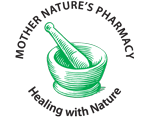Introduction
What Is Cardiovascular Hypertension?
Hypertension is defined as a persistently elevated blood pressure on two or more separate occasions when readings are taken and that the readings are greater than 140/90mmHg. The main “target” or end organs affected by persistently elevated blood pressure include the heart, brain, kidneys and the eyes.
Hypertension along with diabetes Type (2) is one of the fastest growing diseases in the Western World and is estimated by medical authorities that approximately 90% of cases are classified as “Essential” of Primary Hypertension. This indicates that there is no known reason for the hypertension whereas the remainder of cases are classified as being Secondary Hypertension and are due to disorders such as renal disease, coarctation of the aorta, diabetes mellitus, cushings syndrome or even lung tumours which are prone to secrete adrenocorticotrophic hormone (ACTH).There is also a rare form of hypertension known as Malignant Hypertension and this is usually fatal within twelve months from diagnosis.
Risk Factors For Primary (Essential) Hypertension
- Familial History
- Race and Age
- High Salt Intake
- Obesity
- Hyperinsulinemia
- Excessive alcohol consumption
- Inappropriate diet
- Chronic stress
Signs and symptoms of Primary Hypertension
Hypertension has often been called “the Silent killer” because often people do not know they have it until it is too late or it is picked up by a routine physical by the doctor.
Other people may experience a feeling of unwellness, debilitating headaches, dizziness, and be short tempered as well as anxious about their health.
Possible long term effects of hypertension and the extent of target organ disease:
(a) heart – myocardial infarction (heart attack)
(b) brain – cerebral vascular accident (stroke)
(c) kidneys – renal failure (dialysis needed)
(d) optical – vessel pathology and loss of sight
